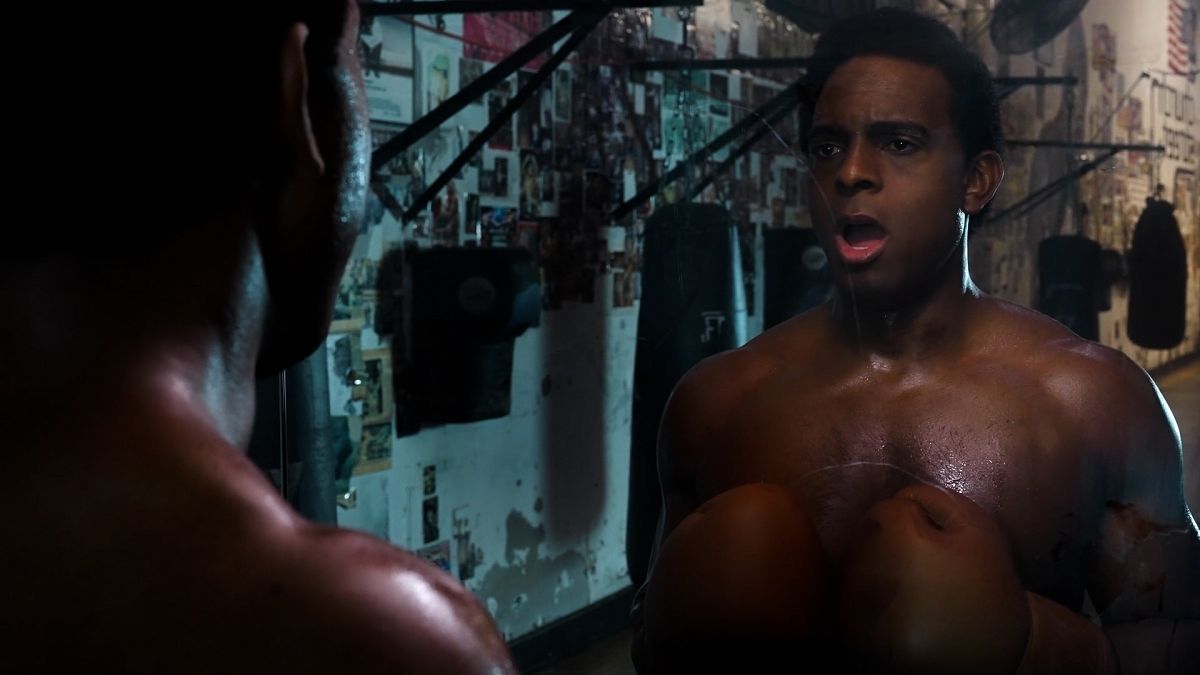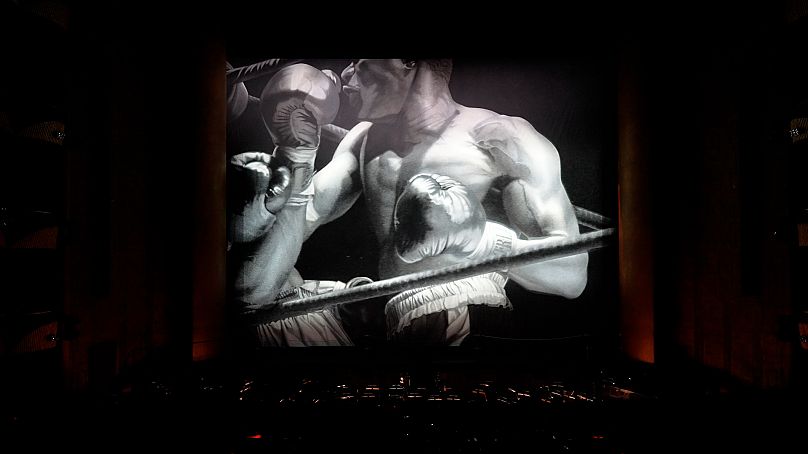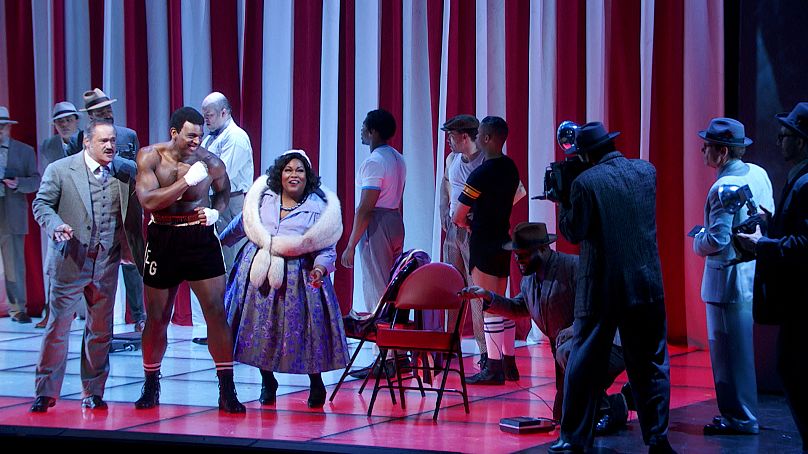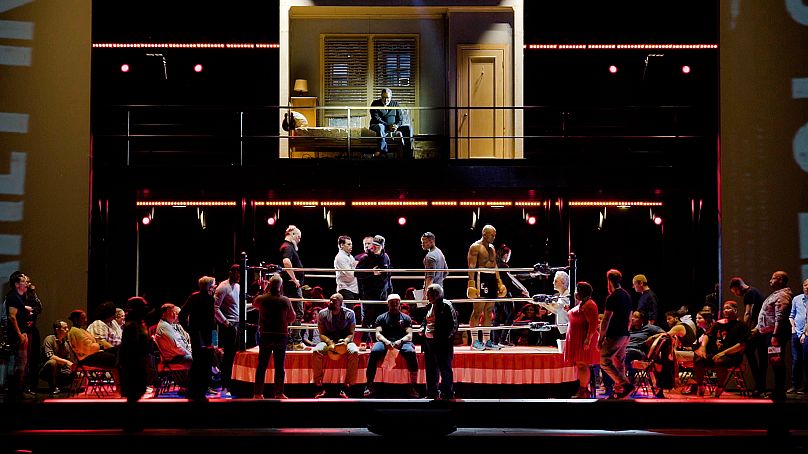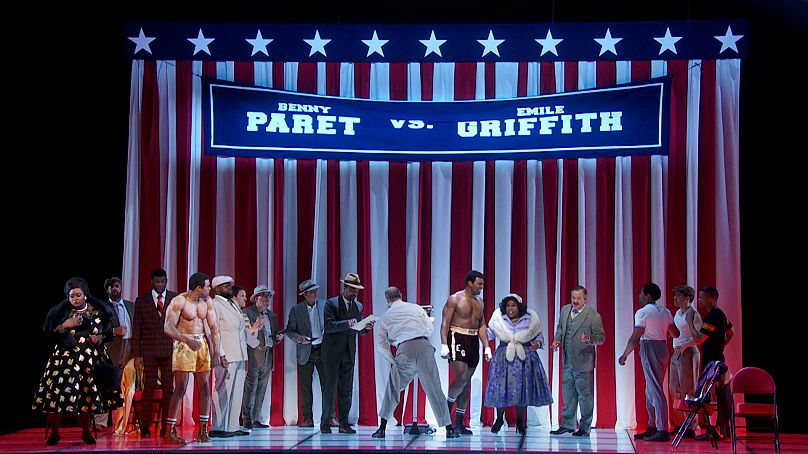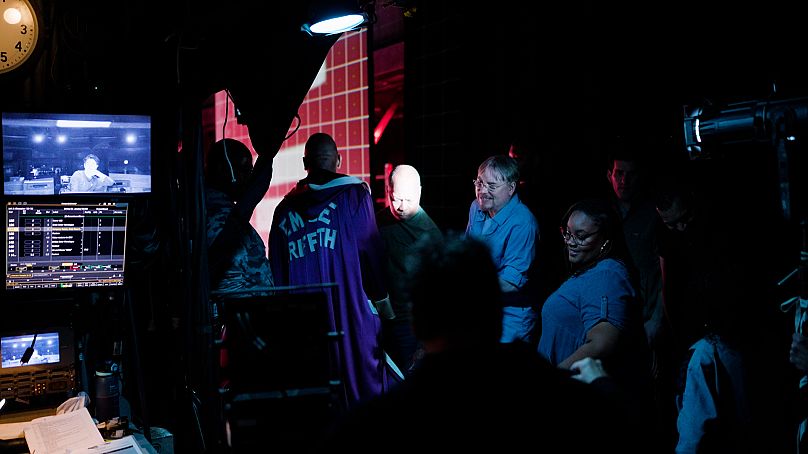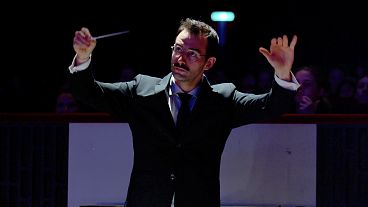How do you bring the music and story of a contemporary opera to life? In this edition of Musica, we go backstage at the Metropolitan Opera in New York and reveal what it takes to present the groundbreaking opera ‘Champion’.
The boxing tragedy that inspired an opera: Round 1
To create a modern operatic masterpiece requires the work of hundreds of people whose collective efforts will breathe life into the production on opening night.
Before we meet just a few of those responsible for staging this groundbreaking production we’ll take a look at the inspiration for this major modern work.
Every great opera requires a gripping story and at the heart of opera 'Champion', the first one written by the six-time Grammy Award-winning composer Terence Blanchard, lies the true and tragic tale of one of the greatest boxers of all time.
The subject of this story is Emile Griffith, a boxer from the U.S. Virgin Islands who arrived in New York in the 1950s. Griffith harboured a secret, he was living a double life as a bisexual man.
In 1962 Griffith was seeking to recapture the crown he had once taken from fellow fighter Benny “Kid” Paret and then lost back to him. Paret then discovers Griffith’s secret and whispers homophobic slurs to him before the fight.
While they are in the ring one of the great tragedies in sports history unfolds. In the 12th round, Griffith delivers seventeen head punches in five seconds and knocks Paret into a coma from which he will not recover. Ten days later he dies.
“I pray to God, I say from my heart, he’s all right.” Griffith was quoted as saying in the dressing room afterward.
Following the tragedy, Griffith was haunted by guilt for the rest of his life and it’s this tragic story that inspired the composer to write the opera.
Blanchard has been described as one of the great voices in contemporary American music and has also composed scores for the iconic filmmaker Spike Lee.
"At the core of the story, to me, it's about two things. It's about redemption and forgiveness and the forgiveness part is forgiving yourself.” Says Blanchard.
“In this piece, you're going to hear a lot of different things. You know, we call it the opera in jazz, because, you know, I'm using a lot of jazz elements but we have calypso, we have sambas. You know, we have even some street beats, if you want to call it that. If I'm going to be a contemporary composer, then all of this is possible DNA for composition, all of it, everything in our cultures from all around the world.” Explains Blanchard.
Creating the set for a modern masterpiece
The opera shows the welterweight champion at different stages of his life through flashbacks and that’s a challenge for the creative team.
When the stage director and set designer get together, they need to define how the world they want to create should look.
“I think the thing that I find these days with new operas and composers who want to do opera, they're more influenced by film than they are by theatre. So it's very rare to do a new opera that doesn't have twenty scenes at least.” Explains Stage Director James Robinson.
To bring the design to life they will use a “model box”, which is like a doll’s house. It’s a small version of what the set will look like. This will help the designer to make important decisions about the stage and the light.
“Honestly the easiest part is to figure out what it's going to look like. With a thing like this, you've really got to start with the way it moves because the way a set moves can't be an encumbrance.” Says Set Designer, Allen Moyer.
James Robinson again. “This isn't the type of opera where we bring down the curtain and then take it out when the next scene happens. It just keeps going. So we have to work out all of those transitions very, very carefully.”
The Metropolitan Opera has a huge workshop where a team of artisans does everything from carpentry to welding and painting.
For this production, the huge hand-painted show curtain is the real eye-catcher.
“That's a big stage. We work big. We're versed in working big. You sort of need to have in mind that from a distance, colour value, texture, sheen, temperature, you need to crank all that up a certain amount.” Says Scenic Artist, at the Metropolitan Opera, Robert Moody.
Bringing the characters to life visually is an extremely important task for the costume designer. At the Met, over a hundred artisans work on thousands of costumes and wigs each season.
Award-winning costume designer Montana Levi Blanco started his work on ‘Champion’ a year before the rehearsals began. From imagining them to picking out the fabrics and to working with the artisans.
“What you see is, I guess, some would call our “work wall”. I think that there are over 400 costumes. And so it's really helpful for us with these scenes with many, many people. It's really helpful for us to see everybody as a collective.” Says Blanco.
“What's beautiful about ‘Champion’ is that it's a memory piece, right? And so we are thrown back into these very visceral, real, alive memories throughout Emile's life. So one of the first is a carnival in the Virgin Islands in the late forties.
The second is a 1950s cabaret drag bar called ‘Hagen’s Hole’. And the third really interesting space is kind of this male-dominated, masculine gym space.
So I think that’s what’s special about ‘Champion’ is that it's an amalgam of all these worlds that you might not normally have access to and ‘Champion’ allows us to present that on the stage in a really beautiful and engaging way.” Explains Blanco.
Can New York Metropolitan Opera 'Champion' attract new audiences?
The punchy story of a boxing tragedy portrayed in ‘Champion’ is part of the Met’s commitment to expand the repertoire to reach new audiences.
Some roles demand great sacrifices and bass-baritone Ryan Speedo Green, who stars as the prizefighter, lost 40 kilograms to get into fighting shape. His training schedule started a year before the production began. He says that his entire career up to this point has been about breaking preconceptions and that 'Champion' epitomises this perectly.
“When you're doing a modern work, a new work, there's so much that goes into even the unprecedented territory of how you are going to present it. I mean we have huge dance numbers in this piece more so than probably any opera the Met has done in a long time. Explains Green.
“This is not just an opera. I mean, there's so much involved, there's dance. I mean, there's a parade on stage, stilt walkers. I mean, it's amazing to look at. It's amazing to listen to. And it's even more amazing to feel these kinds of stories. I'm hoping that the audience will say, you know what? This is beyond our wildest dreams.” Says soprano Latonia Moore.
“I'm very proud to be able to have people experience something that will open their eyes to this art form, which will allow them to do more investigation and have more experiences themselves.” Explains composer Terence Blanchard.
In round 2, the next episode of Musica, we closely follow the exciting rehearsal process as it builds up to the opening night.
